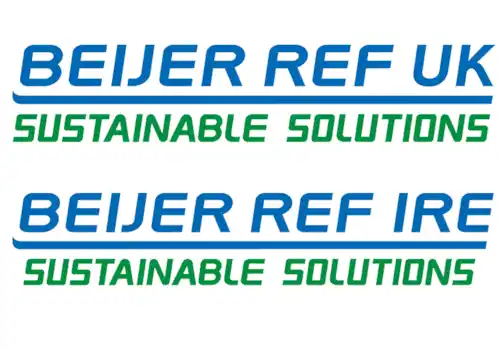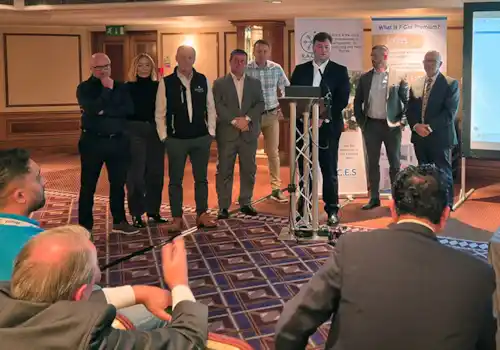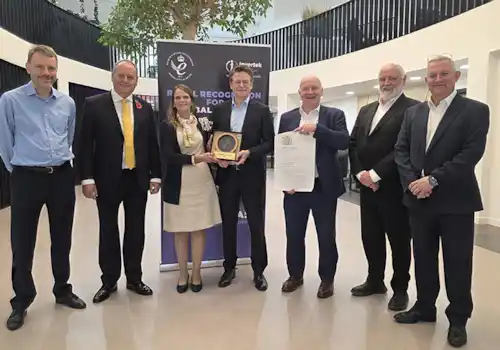19 October 2025
|
We take a look at the latest white paper from Passiv UK, The Smart Secure Electricity Systems Programme (SSES): What it means for heat pump manufacturers, which outlines what the Programme means for your business, including upcoming regulations, compliance timelines, and the technical requirements that will begin rolling out from 2027.
What is the SSES Programme?
The SSES Programme places requirements on manufacturers, energy suppliers and flexibility providers to support domestic Demand Side Response (DSR) in the UK.
This includes communications, data access and business licensing. Under SSES, all heat pumps sold in the UK must be smart-enabled, and capable of providing DSR by responding to remote signals and tariff information. SSES is an ongoing programme from the Department for Energy Security and Net Zero (DESNZ). From an initial consultation in 2019 and a follow-up consultation in 2024, SSES is now entering a detailed consultation phase following a response from the government in May 2025. The regulations laid out in the framework are expected to come into effect over the space of several years up to 2030.
Why is SSES important?
As part of the UK government’s net zero targets, DESNZ released the Clean Power 2030 Action Plan in December 2024.
This sets out a targeted pathway for ensuring that by 2030, 100% of UK electricity demand is met through sources of clean generation - up from 56% today. This will require almost trebling renewable generation connected to the grid to 120GW, alongside 30GW of long duration energy storage.
In order to make the most of this additional renewable energy, we need to change the way we use electricity. Shifting consumption to times of high renewable generation can bring down costs while helping the stability of the grid. This is why the Clean Power 2030 Action Plan forecasts the need for over 10GW of ‘consumer-led flexibility’. The National Energy System Operator estimates that 2GW of flexibility will come from residential appliances, excluding EV charging.
The aim of the SSES programme
While DSR has been around for a long time, recent years have seen unprecedented participation from domestic and small commercial consumers. The launch of National Grid Electricity System Operator’s (now National Energy System Operator) Demand Flexibility Service saw over 1.6 million households take part in DSR. The SSES programme aims to make DSR as accessible and effective as possible through standardisation, regulation, and consumer protection.
Alongside the uptake of renewable electricity, homes across the country are decarbonising traditionally fossil-fuel based services, such as transport and heating. This transition will significantly increase the peak electrical demand of an average UK household. This places a greater strain on both national and local electricity grids, especially when paired with the intermittency of renewable generation. SSES aims to address this by ensuring all new high-power electrical devices being installed are ‘smart by default’, capable of responding to the needs of the grid automatically, without being dependent on user interaction.
What does SSES involve?
There are three components to the SSES programme: Energy Smart Appliances, tariff data accessibility and load control licensing. The load control licensing workstream looks at implementing a licensing regime for any organisation remotely managing the consumption of devices in a domestic or commercial property. The tariff data accessibility workstream explores a standardised format for suppliers to share tariff information. This whitepaper focuses on the Energy Smart Appliances workstream.
As part of SSES, DESNZ aims to set out regulations for the operation of Energy Smart Appliances (ESAs). The 2024 consultation defines ESAs as “electrical consumer devices that are communications enabled and capable of responding automatically to incentive signals… or other more direct control signals… by shifting or modulating their electricity consumption”. The intention behind SSES is for all high-power domestic appliances to function as ESAs from the point of installation. This includes electric vehicle charge points, battery energy storage systems and electric heating including heat pumps.
When does SSES come into effect?
DESNZ have proposed the new regulations on ESA functionality come into effect over two phases.
PHASE 1: Implementation: Q4 2027
The first phase will introduce minimum requirements for smart operation. Devices must be able to utilise two-way communications to modulate their output according to signals (price or otherwise). This must be done while providing a user interface and following cybersecurity best practices. There are no specific requirements for timings, control strategies, or modes of operation.
PHASE 2 Implementation: Q3 2029
The second phase will specify communications standards through which the principles set out in Phase 1 should be achieved. This aims to ensure interoperability between devices and aggregators and suppliers. The original consultation had intended for this standard to be based upon PAS 1878 and OpenADR, but this has not been confirmed.
What obligations does SSES place on manufacturers?
Phase 1 Requirements
As part of SSES, manufacturers of certain appliances are required to ensure that their devices are compliant with a ‘Smart Mandate’. The Smart Mandate lays out a series of requirements to ensure that any device installed in a UK home is capable of responding to external signals in order to participate in DSR. The section below outlines how each of these requirements are to be implemented.
- Communications: All devices should be capable of two-way communications with a third party, such as a supplier or aggregator, collectively known as a Demand Side Response Service Provider (DSRSP). Devices will be required to, as a minimum, report on the current status of the device, including any currently active DSR actions. They must also be able to receive instructions from a DSRSP, including both direct control and pricing signals. There are no specified protocols for Phase 1, but the devices must retain their smart functionality regardless of the DSRSP with which the customer is signed up.
- Time-of-use tariffs: Devices must also be capable of operating according to the consumer’s electricity tariff. As time-of use tariffs become more common, where electricity prices vary throughout the day, devices are required to utilise the variable pricing to lower costs for consumers. As this variable pricing usually aligns with periods of renewable generation, this also supports grid stability through consuming electricity at times of high generation, and avoiding consuming electricity at times of high demand.
- Modulation: In order to support the previous two use cases, devices must be able to modulate their operation according to consumer tariffs or signals from DSRSPs. This means either modulating the level of consumption for a given time period, or shifting the time at which consumption occurs. This could be either in response to price signals, such as a tariff or a profile from a DSRSP, or direct control signals such as a request to reduce consumption for a specific period. There are no prescribed control methodologies for Phase 1.
- Metering: In order to accurately report on electricity consumption, devices are required to include an electricity meter. This meter must be capable of informing both consumers and DSRSPs of electricity consumed for the purpose of DSR; for example, to allow a DSRSP to compare consumed electricity to a baseline during a requested turndown period. SSES includes a 2% accuracy requirement, in line with the requirements for a meter used ‘for trade’ under the Measuring Instrument Regulations 2016 (MIR).
- Users: Devices are required to include a user interface through which users can input their DSR preferences. This might include signing up for a different DSR service, or inputting temperature thresholds within which DSR can operate. This can be a local or remote interface. There is also a requirement for DSR functionality to be enabled ‘by default’. This means at point of commissioning, devices must be capable of operating according to time-of-use tariffs and, where possible, default schedules must be set up to avoid peak times; for example the heat pump could default to heating at 14:00 to 16:00 rather than 16:00 to 18:00.
- Security: The SSES programme follows underlying principles of security and grid stability. Cybersecurity requirements aim to prevent unlawful actors influencing DSR operations in order to disrupt the UK electricity supply. With this goal, SSES mandates use of ETSI EN 303 645 for all ESA and DSRSP communications. In addition to cybersecurity requirements, SSES mandates a ‘randomised delay’ of up to 10 minutes to certain operations, such as turning on after a shutdown event. This aims to reduce the risk of ‘herding’ where multiple devices turn on or off simultaneously and risk overloading the grid.
Phase 2 Requirements
While Phase 1 does not require any open standard for communication, Phase 2 will specify designated standards through which to achieve compliance. There are a number of different options still in consultation, such as whether to have different standards for different ESA types and what specific standards to utilise. Whatever decisions are made in the following consultation rounds, Phase 2 will require devices to utilise a standardised, open communications protocol for sending and receiving messages from DSRSPs.
The current leading choice is to mandate a future revision of PAS 1878, a standard for interoperable communication between DSRSPs and ESAs, which utilises the international protocol OpenADR. Other options being considered include EEBus, SG Ready and Matter. DESNZ are also producing a plain language schema which outlines a set of core messages required for DSR operations, intended to feed into SSES regulation.
How heat pump manufacturers can comply with SSES
The proposals made as part of SSES go significantly beyond the functionality of most heat pumps currently in the market.
While some heat pumps offer internet connected functionality with a level of remote operation, this is very rarely provided as standard. One of the foundational principles of SSES is that DSR is available to customers without any additional cost or action on their part.
To comply with SSES, heat pump manufacturers must integrate with UK flexibility providers in order to receive and process flexibility requirements. Due to the varied nature of UK flexibility markets, effective DSR requires sophisticated forward-looking control strategies to meet the requirements of DSRSPs without compromising on customers’ comfort. This is a step beyond the weather compensation driven control strategy currently utilised by manufacturers.
Other requirements on manufacturers include expanding customer interfaces to include DSR preferences, utilising default settings that avoid peak time operation and following precise cybersecurity principles. SSES also covers the particular case of hybrid heat pumps.
- Add-on support: Heat pump manufacturers are responsible for providing a certificate of compliance stating that the devices they have provided to a distributor are compliant with SSES regulations. Distributors are then responsible for ensuring that devices are supplied to installers, developers or other parties with the necessary components for smart functionality.
SSES provides a framework through which manufacturers can achieve compliance in collaboration with third parties. Specifically, SSES states that devices may be sold with ”add-on ESA functionality”, wherein a bundle of products may achieve compliance when sold together, even if the individual products within that bundle do not. Devices cannot be sold without the smart add-on and retrofitted with smart functionality after installation, but must be sold with all necessary components included. While the government is proposing responsibilities on distributors to ensure these bundles are sold as required, responsibility for compliance certification remains with the manufacturer.
Smart heat pump controls
For heat pumps, the government proposes that SSES compliance may be achieved via a “smart thermostat connected to an appliance via a communication method, or a smart controls ‘box’ physically attached to the appliance”. This flexible approach opens the door for heat pump manufacturers to work alongside smart controls providers to ensure SSES compliance while minimising cost and ensuring best customer experience.
Smart controls provide a route to compliance without the need for additional development or bespoke regional implementations. Flexibility markets are often complex and come with specific requirements. Specialist controls can support better responses and DSR participation. In instances where householders are part of a monetised DSR programme, this also enables heat pump customers to maximise any potential revenue from DSR. The add-on allowance within SSES enables heat pump manufacturers to focus on developing the best possible hardware through mutually beneficial collaborations.
Passiv Smart Thermostat
The Passiv Smart Thermostat is the only smart thermostat designed specifically for heat pumps that complies with SSES.
Designed with simplicity in mind, it helps householders on the transition to low-carbon heating while offering a host of cost saving benefits. Users can control their heating using the in-home Programmer and Thermostat or with the Passiv app. With the this ecoHeat function, householders’ comfort requirements are always met, while improving heat pump efficiency by 17%, as verified by the Energy Saving Trust. Additional cost saving benefits include optimisation to tariffs and solar generation. Users can also participate in DSR through Passiv’s flexibility service, Greener Grid Payments.
To read more about the features of the Passiv Smart Thermostat and white paper in full visit: www.passivuk.com/ insight/sses-programme-heat-pumpmanufacturers








